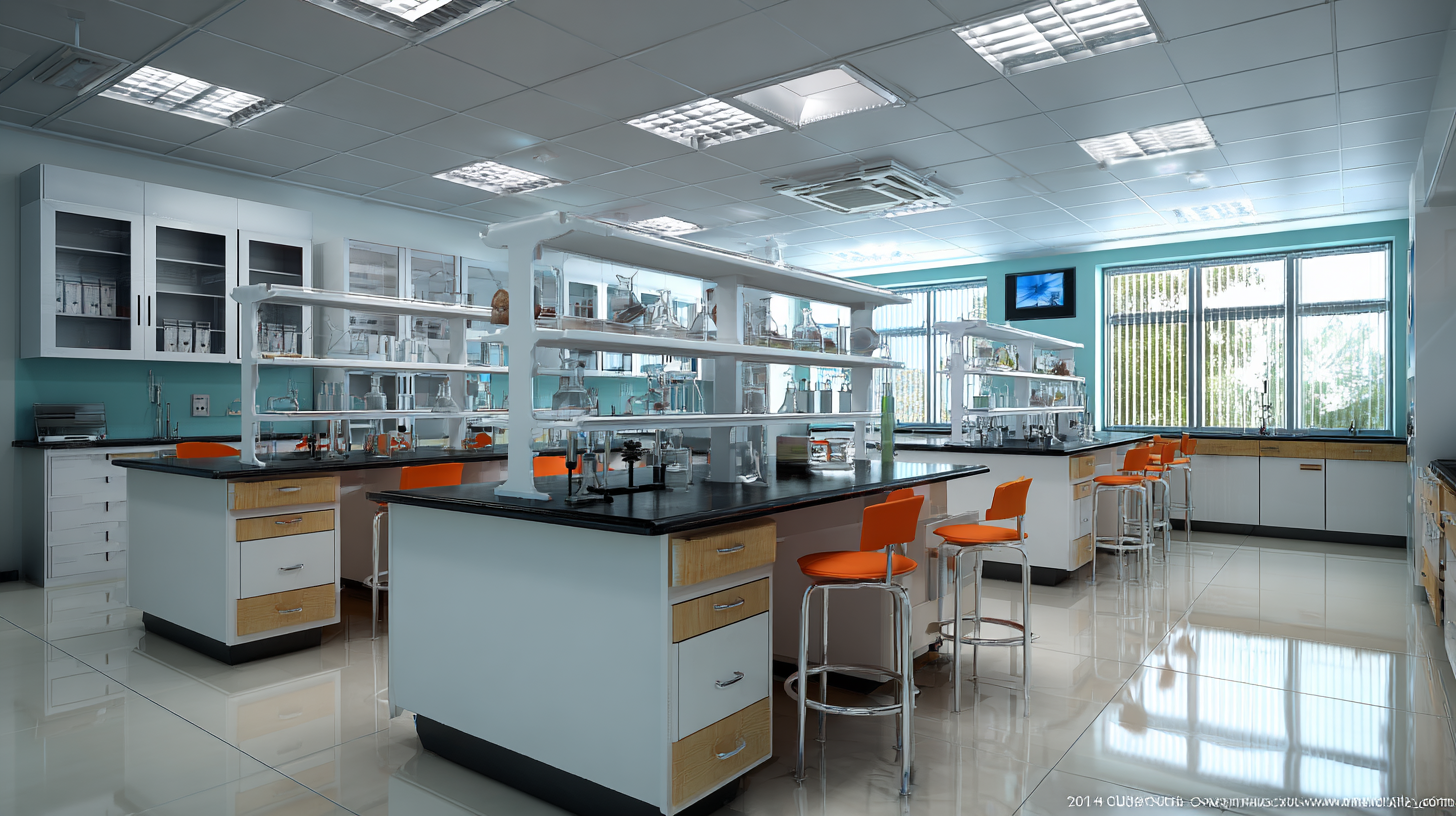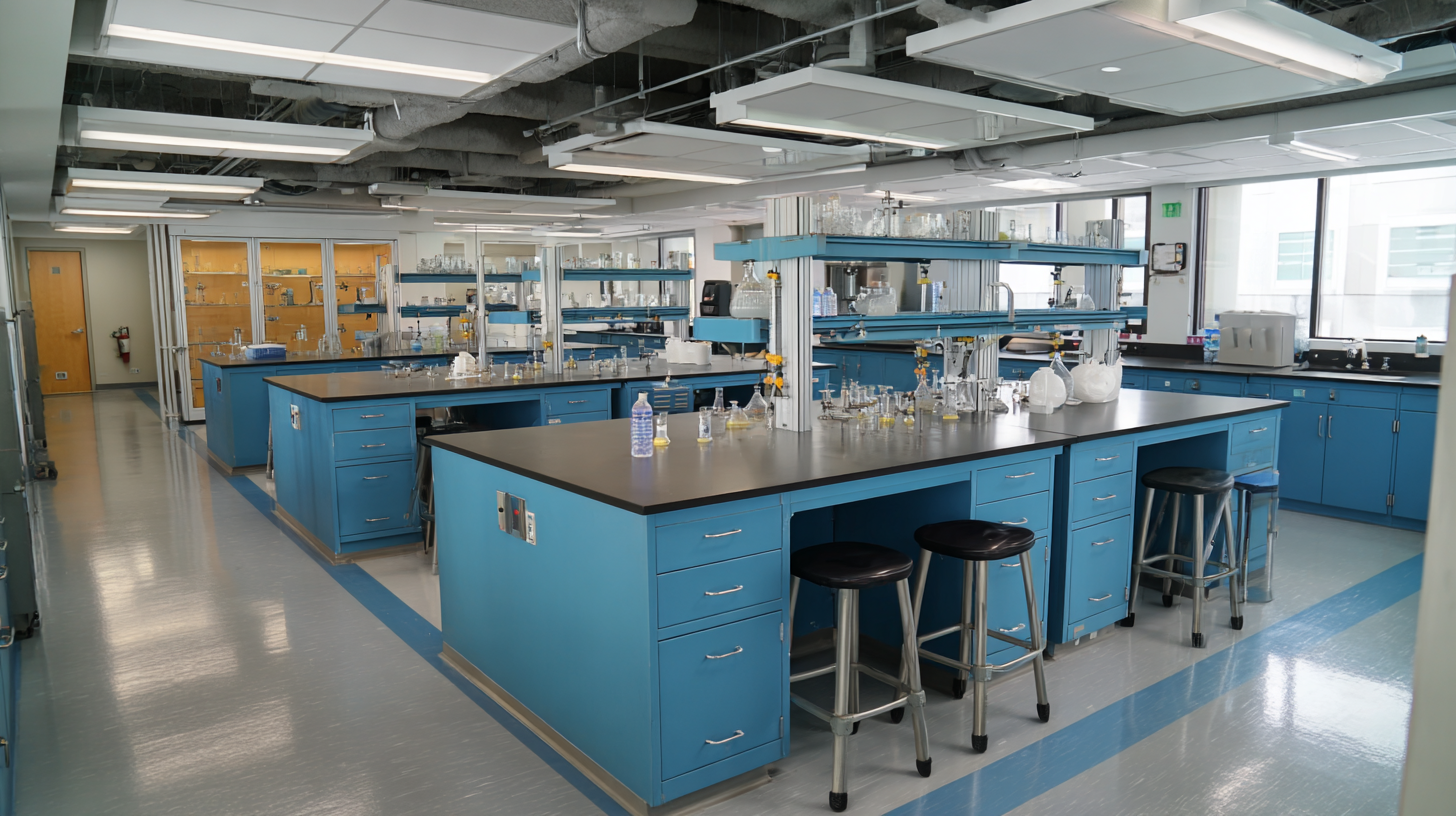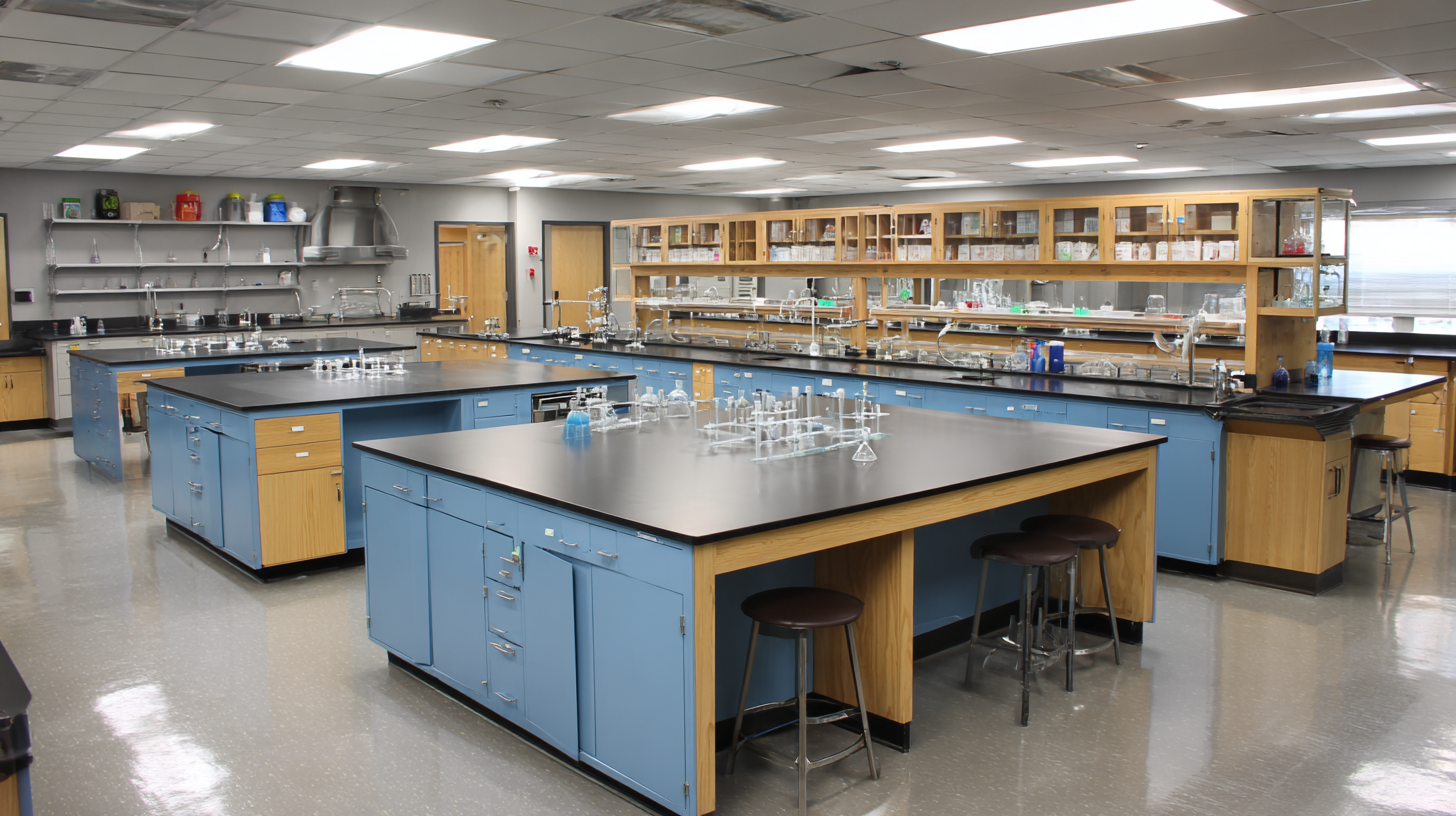In the ever-evolving landscape of scientific research and educational institutions, the significance of high-quality Chemistry Lab Furniture cannot be overstated. According to a recent industry report by Research and Markets, the global laboratory furniture market is anticipated to reach USD 7.5 billion by 2025, driven by advancements in laboratory practices and the increasing need for safety and efficiency.

As labs strive to maximize operational value, the role of after-sales services becomes paramount, influencing not just the initial investment but also the long-term sustainability and functionality of laboratory setups. By focusing on cost-effective strategies and understanding the implications of after-sales support, stakeholders can optimize their laboratory environments while ensuring compliance with safety standards, ultimately enhancing productivity and fostering innovation in research applications.
When investing in chemistry lab furniture, identifying key features of quality suppliers is essential for maximizing value. A recent report from Research and Markets indicates that the global lab furniture market is projected to reach $5.4 billion by 2027, largely driven by the demand for innovative and durable lab solutions. High-quality suppliers often provide a combination of robust materials, such as corrosion-resistant steel and chemical-resistant laminates, ensuring longevity and safety in laboratory environments.
Additionally, reputable suppliers should offer comprehensive after-sales services, including maintenance and support, which are critical for sustaining the functionality of lab furniture. According to a survey by Laboratory Equipment Magazine, 72% of lab managers prioritize suppliers that provide extensive warranties and timely service responses. This highlights the importance of assessing not just the initial cost, but also the long-term service commitments that will protect the initial investment and enhance the overall efficiency of lab operations.
| Feature | Importance | Cost Indicator | Supplier Rating |
|---|---|---|---|
| Durability | High | $$$ | 4.8/5 |
| Safety Features | High | $$$ | 4.7/5 |
| Customization Options | Medium | $$ | 4.5/5 |
| Warranty Period | High | $$ | 4.6/5 |
| After-Sales Support | High | $$ | 4.9/5 |
When investing in chemistry lab furniture, evaluating after-sales service options is critical for ensuring long-term value. After-sales services can significantly impact the longevity and functionality of your lab furniture, as they often include installation assistance, maintenance, and warranty options. Choosing a supplier that provides comprehensive after-sales support not only enhances the user experience but also protects your initial investment. Consideration of service response times and the availability of spare parts is crucial, as these factors can minimize downtime and keep your laboratory operations running smoothly.
Moreover, it is essential to assess the training and support offered by the manufacturer. A supplier that provides training for your staff on the proper use and care of the furniture can lead to better maintenance practices and prolonged product life. Regular check-ups and maintenance services should also be evaluated, as proactive care can prevent issues before they escalate. Ultimately, a thoughtful approach to after-sales service not only maximizes the value of your chemistry lab furniture but also contributes to a safe and efficient working environment for your team.
This bar chart illustrates the cost savings associated with different after-sales service options for chemistry lab furniture over a three-year period. Evaluating these options can help maximize long-term value.
When it comes to purchasing lab furniture, effective cost management is crucial. According to recent reports, optimizing your lab's budget requires strategic planning and consideration of various factors, including the choice of materials, designs, and suppliers. One of the most impactful strategies is to focus on suppliers that offer comprehensive after-sales services. Research shows that investing in high-quality lab furniture not only enhances durability but also reduces long-term costs associated with maintenance and replacement.

Space-efficient lab designs can further maximize your budget. Compact layouts promote both efficiency and accuracy, making the most out of limited space without compromising functionality. Reports indicate that well-designed workspaces can improve productivity by up to 30%. Additionally, making informed decisions about flooring can also contribute to overall cost-effectiveness; durable flooring options can cut down on replacement expenses and increase safety. By leveraging these strategies, lab managers can stretch their budgets while still ensuring a functional and safe laboratory environment.
When it comes to investing in chemistry lab furniture, the significance of supplier reputation cannot be overstated. A well-regarded supplier typically stands out for their reliability and quality, as demonstrated in customer reviews and testimonials. Before choosing a supplier, it’s wise to research their history and the experiences of other customers. Good ratings often indicate a commitment to customer satisfaction and product excellence, which are critical in a laboratory setting where safety and functionality are paramount.
Here are some tips to maximize value from your supplier choice:
In today's competitive landscape, maximizing ROI through effective maintenance services for lab furniture is crucial for life sciences organizations. Research indicates that labs with well-maintained furniture and equipment can achieve up to a 25% increase in operational efficiency. By investing in high-quality lab furniture and prioritizing after-sales services, companies can ensure that their workspaces are not only functional but also conducive to innovation.
Regular maintenance and thoughtful design of lab spaces can significantly impact research and development outcomes. Studies show that laboratories designed with flexibility can adapt to changing needs, reducing downtime and enhancing productivity. For instance, implementing a proactive maintenance schedule can help prevent more costly repairs down the line, with effective maintenance programs yielding a return of $4 to every $1 spent. This approach allows organizations to focus on innovation, ultimately improving their return on R&D investments and accelerating the path to groundbreaking discoveries.

